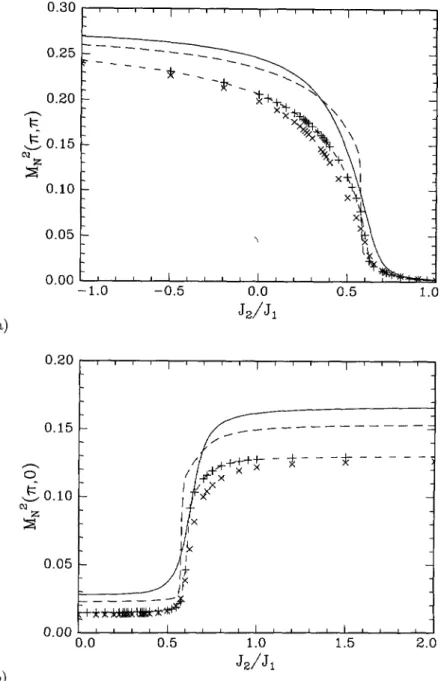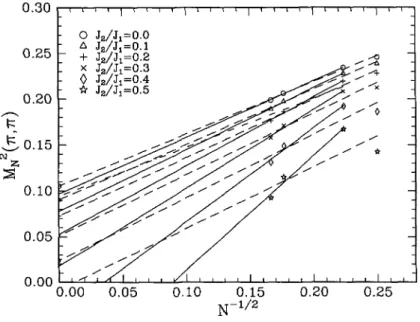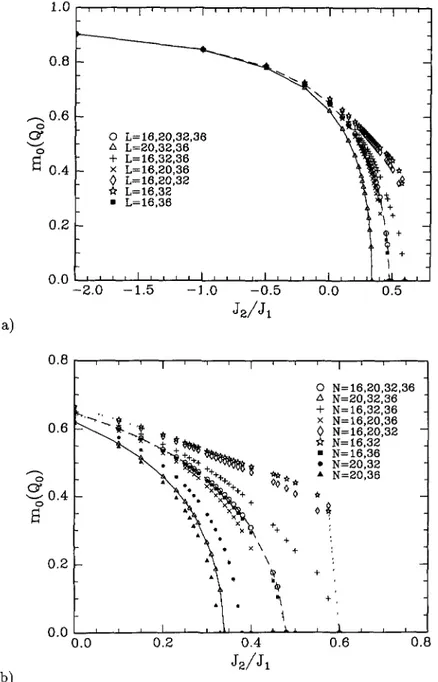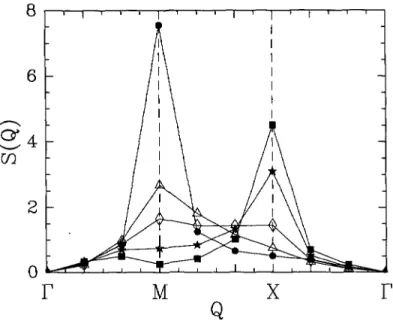Magnetic Order and Disorder in the Frustrated Quantum Heisenberg Antiferromagnet in Two Dimensions
Texte intégral
Figure




Documents relatifs
- The ordered phase of a two-dimensional Heisenberg antiferromagnet with small anisotropy is studied on the basis of the spin wave theory corrected for hydrodynamic effects
- Higher order terms in the equation of state are derived and studied numerically for the Ising model, A brief comparison is made with corresponding results for exactly
We study the magnon interactions by means of a self-consistent calculation in a frustrated quantum Heisenberg antiferromagnet with first and second neighbor exchange couplings.. We
Si la source continue est une source de tension, l’onduleur est appelé onduleur de tension, si en plus la fréquence est indépendante de la source de sortie, il est dit autonome.
bilinear exchange. Interactions up to the fourth neighbours seem sufficient to describe the dispersion relations; the addition of higher order interactions or
We identify two situations where Richardson interpolation can be useful: (1) when the hyperparameter is the number of iterations of an existing iterative optimization algorithm,
The present paper addresses the two points men- tioned above: (i) to verify the conjecture of Cardy and Jacobsen 23 on the disappearance of the latent heat in the case of a
When the field is applied perpendicular to the axis of magnetic anisotropy, a new magnetic state emerges through a discontinuous transition and persists in a narrow field range





